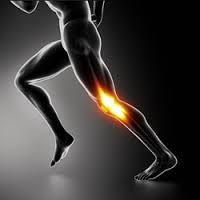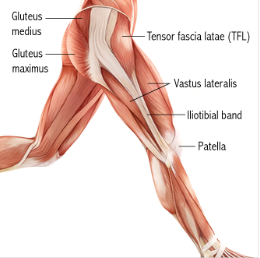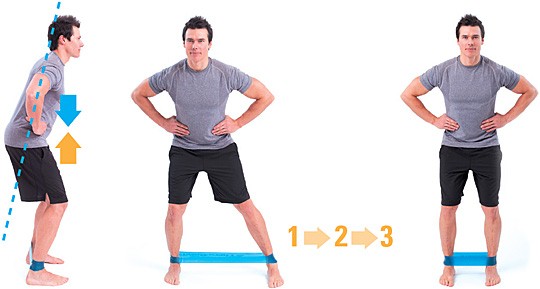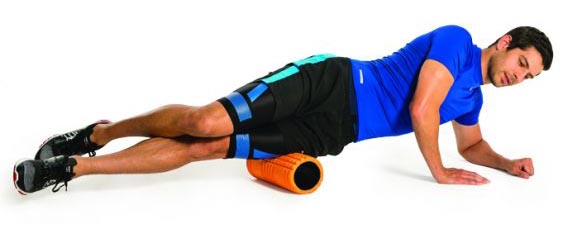Iliotibial Band Syndrome
Posted on October 1st, 2018 by Andries Lodder

By Jennifer Steele
In our previous post we looked at what Fascia is and at one of the most common conditions associated with it, Plantar Fasciitis. Following on from that topic, another common and painful condition associated with fascia is Iliotibial band syndrome or ITB Syndrome. ITB syndrome or ITB friction syndrome is a chronic injury that causes pain on the outer aspect of the knee.The Iliotbial Band:
The Iliotibial band is a thick fibrous layer of connective tissue that lies on the lateral aspect of the thigh. It attaches at the Iliac crest of the pelvis and runs down the lateral aspect of the thigh, crosses over the knee joint and attaches to the top of the Tibia in the lower leg. The ITB helps stabilize the outer part of the knee and it helps with both knee flexion and extension.
Iliotibial Band Syndrome:
Cause
When the knee joint is flexed, the ITB is located behind the femoral epicondyle. This is a bony protuberance of the femur or thighbone. When the knee gets extended the ITB moves forward and across the epicondyle. In order for this action to occur smoothly there is a sac of fluid known as a bursa between the ITB and the bone. The problem comes in when there is increase friction and stress placed on this area. With repeated stress and strain the ITB can become inflamed and rubs on the bursa and bone. This then cause pain on the lateral or outer aspect of the knee joint. In simple terms ITB syndrome is caused by repetitive bending and stretching of the knee during running, swimming, climbing and other activities.Signs and Symptoms:
Symptoms typically start a short while into exercise and get progressively worse as exercise is continued.- Pain on the lateral or outer aspect of the knee when running or doing other aggravating activities
- A clicking sensation when bending and straightening the knee
- Pain after exercise that lingers
- The ITB will be tender to the touch
Treatment
Most people with plantar fasciitis recover with conservative treatment methods.- Rest:
- Stopping the aggravating exercise is step one in the treatment process.
- Ice:
- Icing the inflamed area to relieve pain and swelling
- Running biomechanics and road position:
- Ensuring the correct biomechanics while running is essential. It is also important to check the camber of the road that you are running on as repetitively running on the same camber can lead to ITB pain. This is because more pressure is placed on the one leg.
- Physical Therapy:
- Specific stretching and strengthening exercises can be done to strengthen the surrounding muscles and take the pressure off the fascia and allow it to heal.
Here are simple exercises that you can do to help relieve the ITB pain:
Side Ways walking:

- Place Loop band/Thera Band around the ankles
- Stand with feet hip width apart, toes straight, knees bent, bum out backwards
- Now take a step with the right leg out to the side, keeping the knees out in line with the toes
- Then bring the left leg inwards so that the feet are back in the starting position, again focusing on keeping both knees out in line with the toes (perform this movement slow and controlled)
- Repeat steps 3 and 4 until you have completed 10-20 steps and then repeat on the left leg.
- Perform 4 sets of 10-20 repetitions on each leg
Foam Roller Stretch:

- Place a foam roller on the floor or mat
- Lay on your side with the top of your ITB (hip) on top of the roller
- Support your upper body with your foam roller
- Move your body up and down so that the roller moves up and down the leg
- Go as far down as the knee joint
Tweet